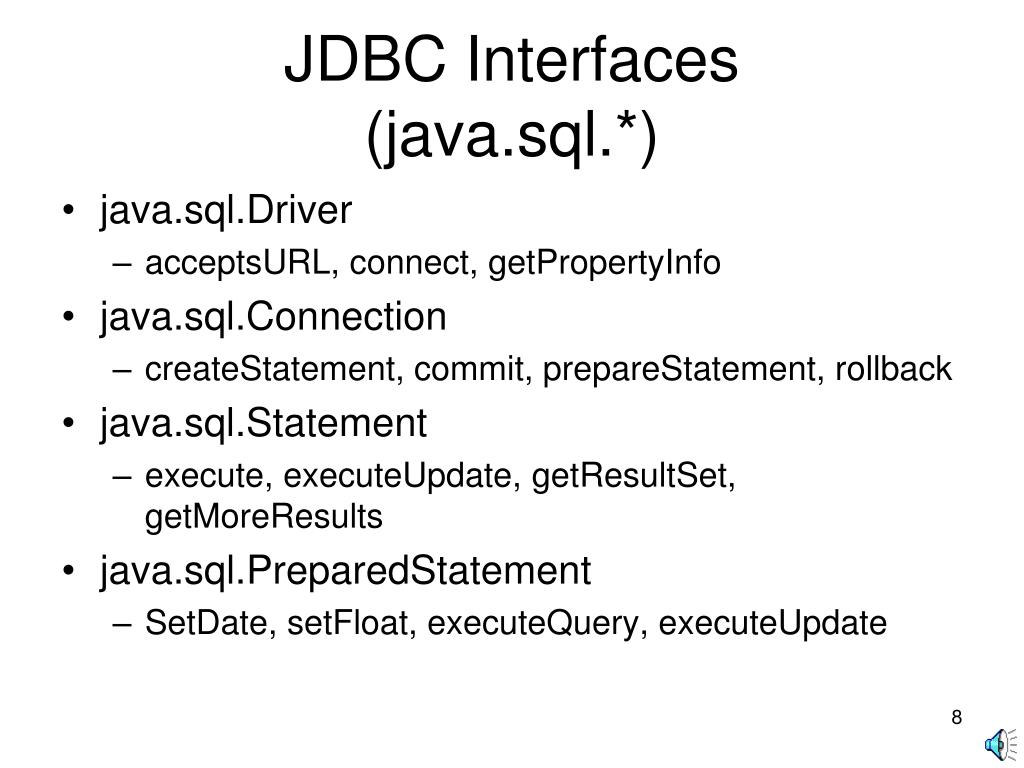

In obtuse language, the bottom of the JDBC 4.2 update spec confirms that article, with new mappings added to the getObject and setObject methods. This article published by Oracle explains that the JDBC in Java 8 has been updated transparently to map a SQL DATE value to the new type if you call getObject and setObject methods. Then we can completely abandon the ugly mess that is the date-time classes in the java.util.* and java.sql.* packages.
Java.util.sql setdate driver#
java.time (inspired by Joda-Time, defined by JSR 310, bundled with Java 8, extended by the ThreeTen-Extra project)īoth offer a LocalDate class to represent a date only, with no time-of-day and no time zone.Ī JDBC driver updated to JDBC 4.2 or later can be used to directly exchange java.time objects with the database.In modern Java, you now have a choice of decent date-time libraries to supplant the old and notoriously troublesome, Calendar, SimpleTextFormat, and classes bundled with Java. When you have a in hand but need a, simply pass the.Everywhere else in Java, where you need a time-of-day along with your date, use.When reading or writing to a database’s date-only column, use as it clumsily tries to mask its time-of-day.So when to use which? Simple, after cutting through the confusion. That hack, that subclass of j.u.Date, is .Īll this hacking, poor design, and misnaming has made a confusing mess. They took their date-time class (the misnamed class, containing both date and time) and extended it to have an instance set its time-of-day to midnight UTC, 00:00:00. Instead of creating a date-only class, the Java team made a terrible hack. JAVA In the badly designed date-time library bundled with the early versions of Java, they failed to include a class to represent a date-only.SQL In SQL, the DATE data type stores a date-only, without a time-of-day.To conform with the definition of SQL DATE, the millisecond values wrapped by a instance must be 'normalized' by setting the hours, minutes, seconds, and milliseconds to zero in the particular time zone with which the instance is associated. ← Time-of-day set to Zero, midnight GMT/UTC

A milliseconds value represents the number of milliseconds that have passed since Janu00:00:00.000 GMT. A is merely a with its time set to 00:00:00.įrom the doc (italicized text is mine)…Ī thin wrapper around a millisecond value that allows JDBC to identify this as an SQL DATE value. The question and other answers seem to be over-thinking the issue. Instant instant = myResultSet.getObject( …, Instant.class ).tObject( ld, … ) įor a database type akin to SQL-standard TIMESTAMP WITH TIME ZONE, use.LocalDate ld = myResultSet.getObject( …, LocalDate.class ).Use java.time classes instead.įor a database type akin to SQL-standard DATE, use. Should I use or ?īoth are obsolete as of JDBC 4.2 and later.


 0 kommentar(er)
0 kommentar(er)
